-
 Korea.net's 24-hour YouTube channel
Korea.net's 24-hour YouTube channel- NEWS FOCUS
- ABOUT KOREA
- EVENTS
- RESOURCES
- GOVERNMENT
- ABOUT US
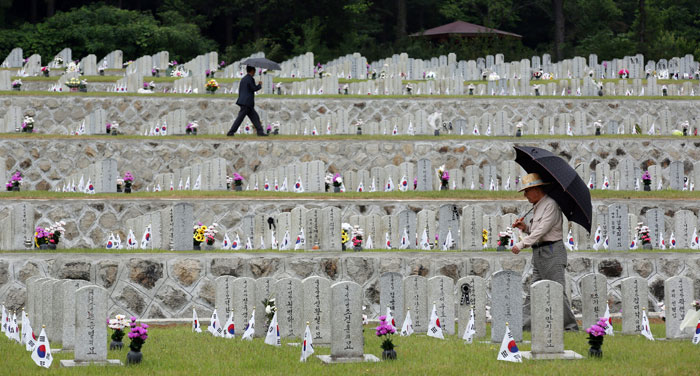
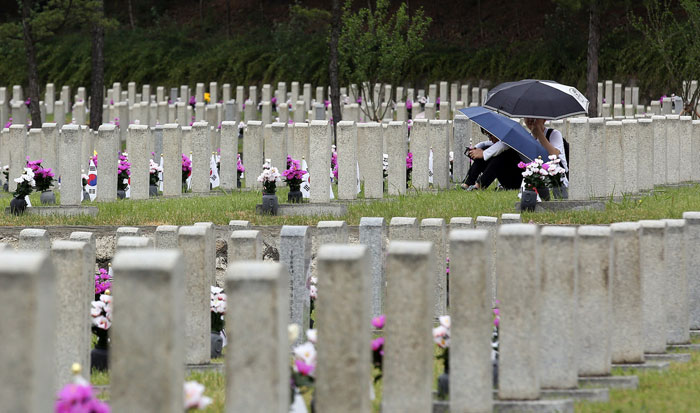
People visit the Seoul National Cemetery on June 5.
Korea's Memorial Day, which falls on June 6, is a day when people pay respect to the souls of all the fallen heroes who died protecting their nation and when people are reminded of their sacrifices.
Visitors flocked to the Seoul National Cemetery on June 5, a day ahead of Memorial Day, despite the rainy weather.
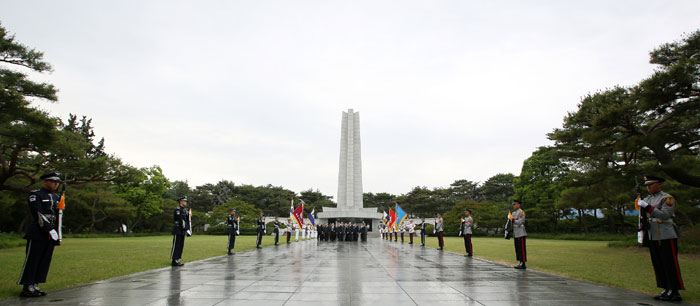
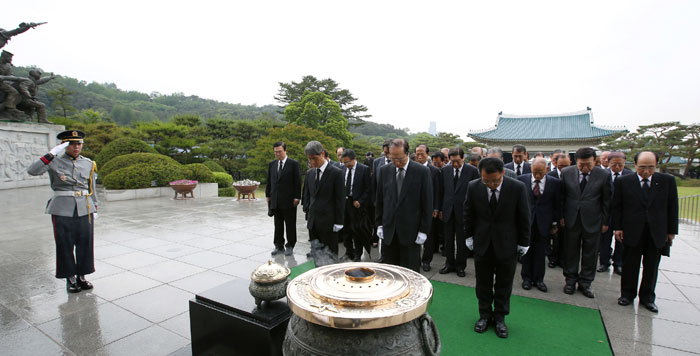
Members of the Republic of Korea Parliamentarian Society pay silent tribute in front of the Memorial Tower at the Seoul National Cemetery on June 5.
The Seoul National Cemetery was established on June 15, 1955, to entomb people of national merit and to pay tribute to their sacrifices. It was the first such cemetery to be christened, among the eight national cemeteries across the country. The people buried here include independence fighters as well as soldiers who lost their lives after independence in the Korean War or the Vietnam War.
The Memorial Tower is the symbolic center of the Seoul National Cemetery. It was built to revere the spirit and sacrifices of the patriotic martyrs who lost their lives for the country and its people. It is a must-visit location not only for the Korean president and other high-ranking government officials, but also for the heads of state from foreign countries. Inside the tower, the Memorial Tablet Enshrinement Hall houses the memorial tablets of about 110,000 unknown soldiers who died fighting for their country during the Korean War.
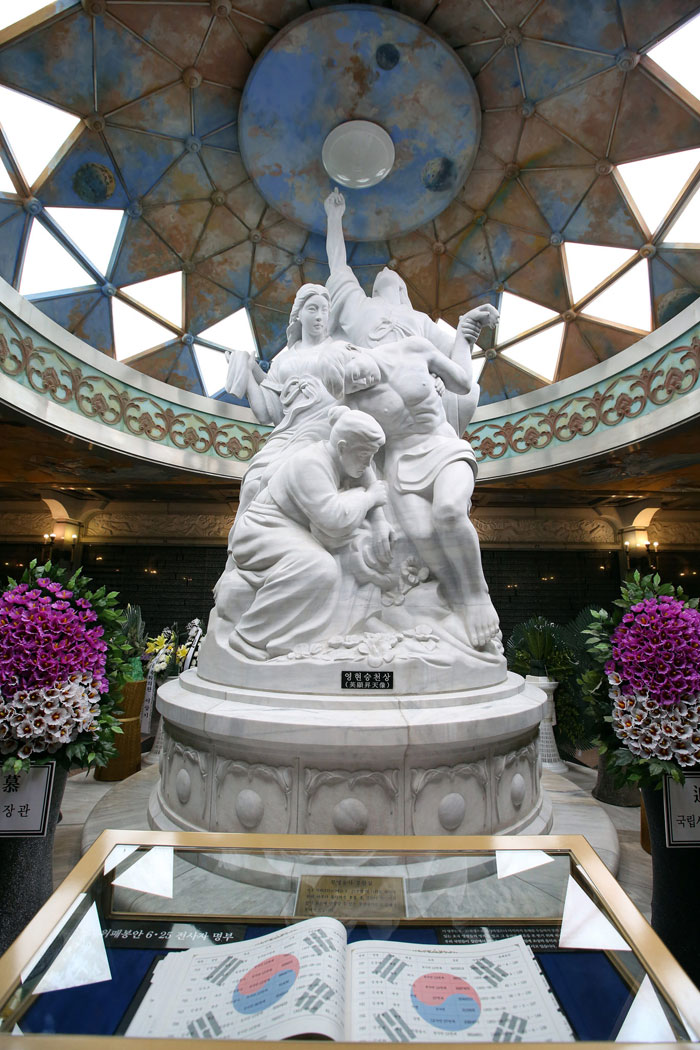
The statue inside the Memorial Tower pays tribute to the unknown soldiers who died during the Korean War.
Many of the visitors to the cemetery include grey-haired war veterans themselves, saluting in front of the tombs, or bereaved family members. No matter who they were, however, each visitor paid his or her respects to the deceased patriots and honored their souls.
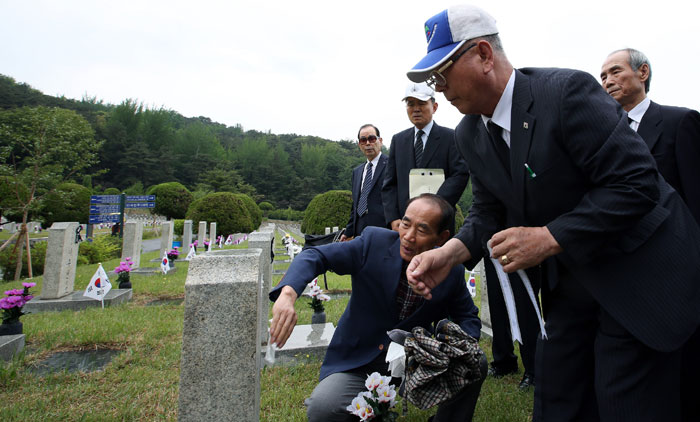
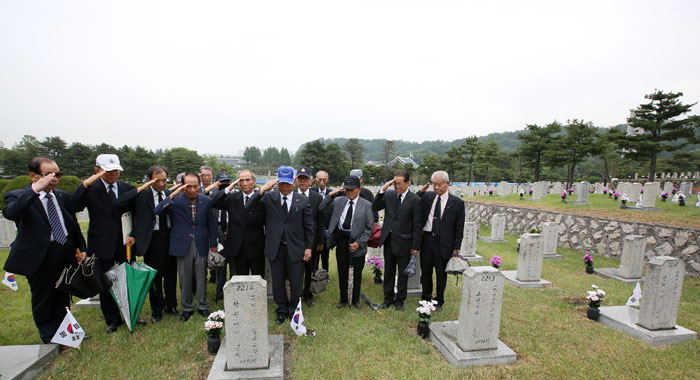
A group of Vietnam War veterans salutes the tomb of one of their fellow soldiers after locating and tending to it.
Many people visited the tomb of General Chae Myung-shin (1926-2013). Chae was the first Korean general who declined to be buried in the graveyard reserved for the generals and chose to be buried in the graveyard for war casualties. As he chose to be with his fellow soldiers rather than displaying his authority as a general, many people come to pay respect to him.
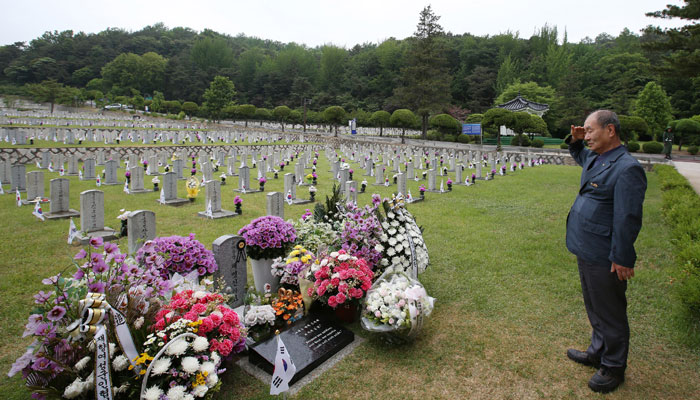
War veteran Oh Wan-gyu salutes the tomb of General Chae Myung-shin.
Gravesites for the heads of state are also popular places among cemetery-goers. The Seoul National Cemetery houses the gravesites of former President Rhee Syngman (1875-1965), Park Chung-hee (1917-1979) and Kim Dae-jung (1924-2009). That morning, people continued to visit these graves to pay their respects to the former leaders.
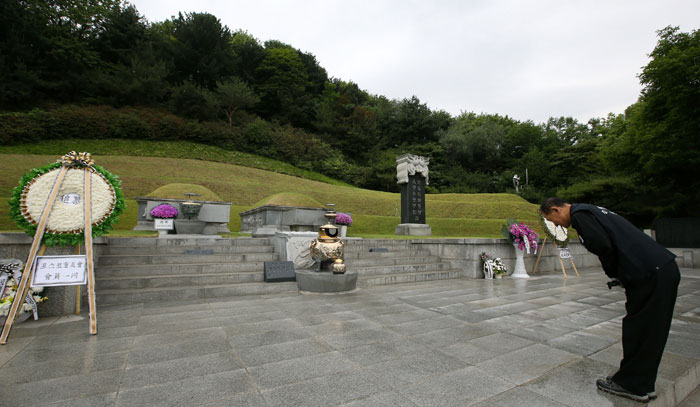
A citizen pays silent tribute in front of the graves of former President Park Chung-hee and his spouse Yuk Young-soo.
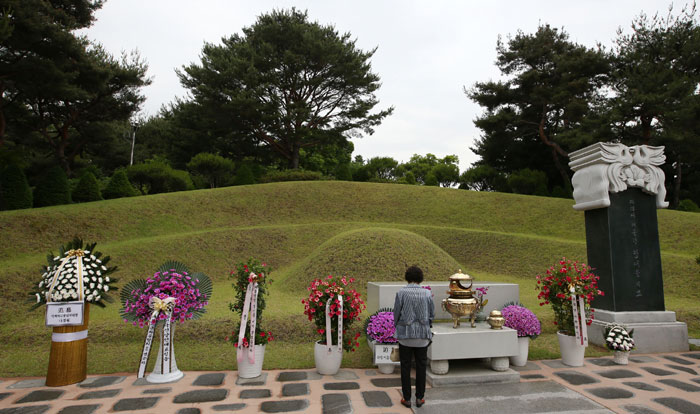
A visitor looks at the grave of former President Kim Dae-jung.
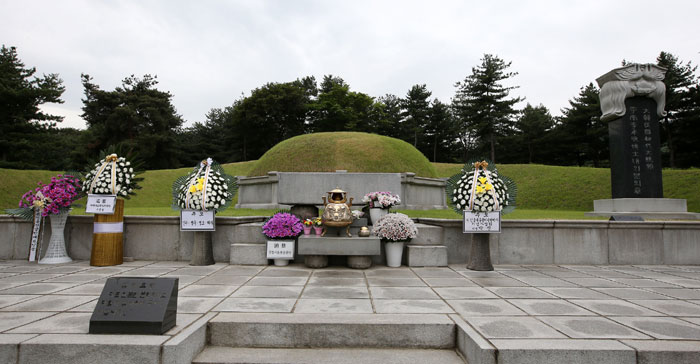
The gravesite of former President Rhee Syngman and his spouse Francesca Donner Rhee.
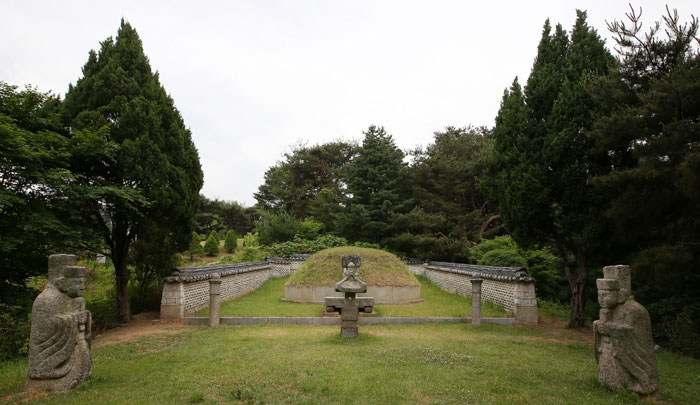
The gravesite of Lady Changbin An, grandmother of King Seonjo (r. 1567-1608), the 14th king of the Joseon Dynasty.
Today, the Seoul National Cemetery has become a place of rest and calm for the citizens of the city, rather than solely remaining a solemn national cemetery. Various events, such as concerts, flower festivals and photo exhibitions, are held regularly at the cemetery. It also attracts many visitors, regardless of age or sex, thanks to its well-manicured gardens. The view of the Hangang River as seen from the cemetery is also an unmissable part of any visit.
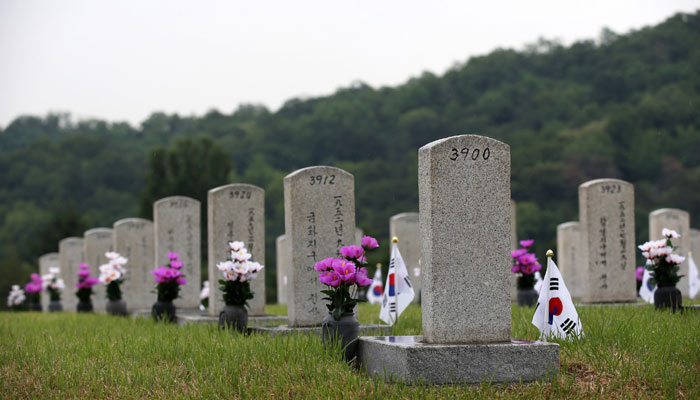
Tombstones for common soldiers are laid out in a row. Each tombstone is engraved with the name of the deceased and the place and time of their death. Some of them are engraved with only a name due to a lack of such information.
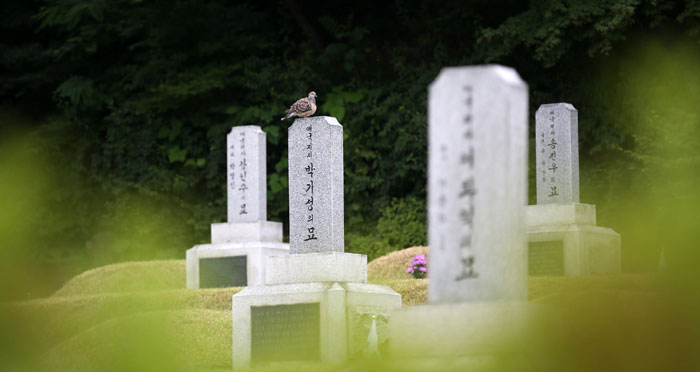
The graveyard is for people of national merit who devoted their lives to fight for the independence of the country.
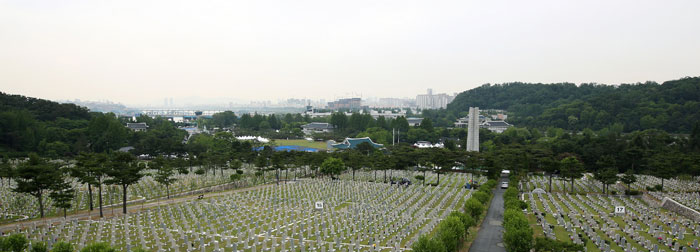
A view of the Seoul National Cemetery. Approximately 54,000 tombs are located in the 141,900 square-meter area.
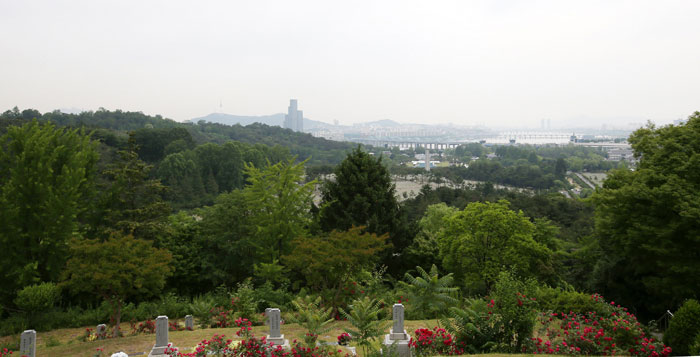
A view of the Hangang River as seen from the cemetery's first graveyard for generals.
More information about the Seoul National Cemetery is available at its homepage in Korean and English.
http://www.snmb.mil.kr
Article by Yoon Sojung
Photo: Jeon Han
Korea.net Staff Writers
arete@korea.kr













